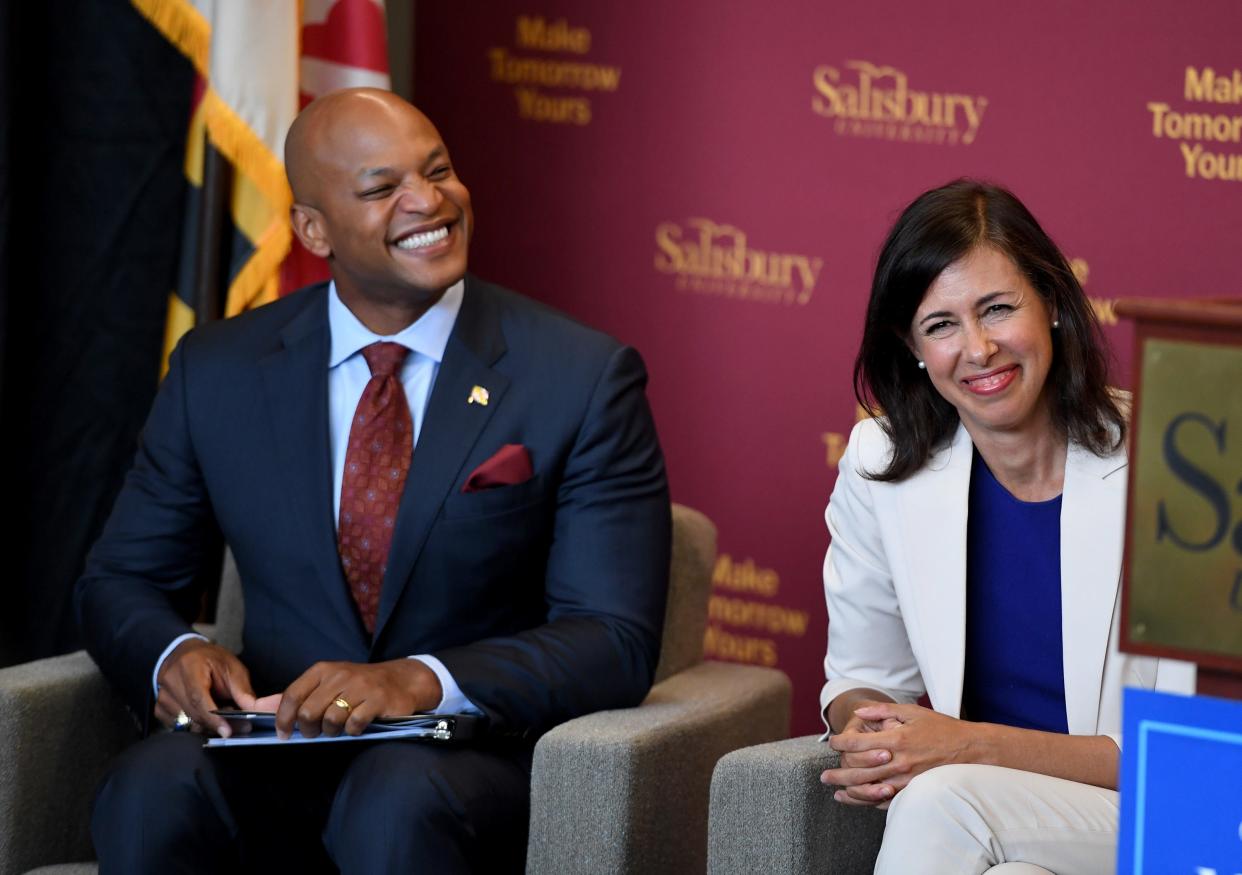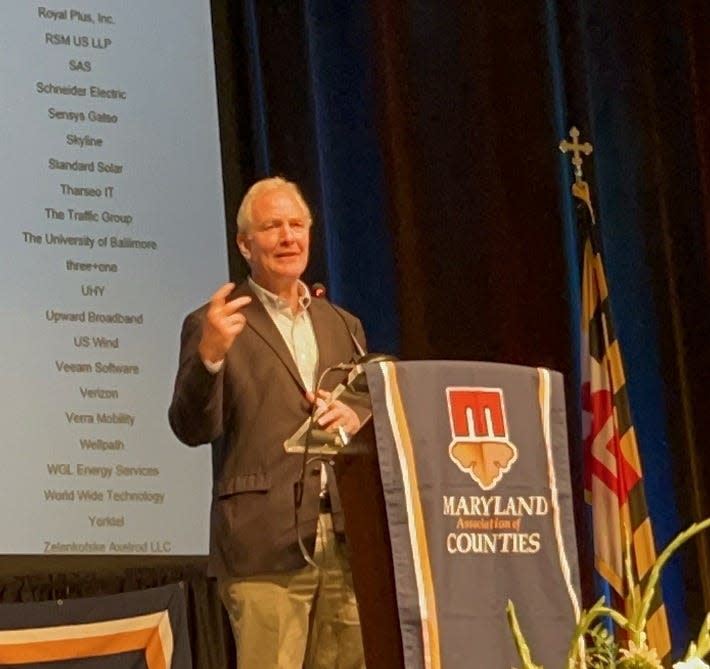As Maryland expands broadband buildout, low-income internet benefits are disappearing
Over a quarter-million Maryland households may be losing the benefit from the Federal Communications Commission’s Affordable Connectivity Program as funds are expected to be exhausted by the end of the month while work to connect some locations in the state continues.
The federal agency’s chair, Jessica Rosenworcel, who visited Salisbury, Maryland, last August in part to pitch the program that offered a $30-a-month benefit for internet access to low-income households, wrote a letter to congressional lawmakers May 1 asking for more funding.
“If additional funding is not promptly appropriated,” wrote Rosenworcel, according to a May 1 press release, “the one in six households nationwide that rely on this program will face rising bills and increasing disconnection.”
More: Gov. Moore, Day visit Salisbury with federal officials in push to broaden broadband program

In Maryland, the rate of reliance on the program is not quite as high as one in six. The state has 2,318,124 total households, according to United States Census Bureau statistics.
In a May 1 email, Allison Foster, director of communications at the Maryland Department of Housing and Community Development, said 287,722 is the total number of households enrolled in the program.
About one in eight (12.4%) Maryland households participate in the program.
Internet infrastructure buildout continues in Maryland’s Somerset County
During the period that the benefit (and a preceding one enacted at the end of 2020) was available, the Census Bureau indicates 90.6% of households in the state had a broadband Internet subscription.
Also during that period, millions of federal dollars were spent to build out internet network infrastructure across the state, including in previously unconnected areas. Around 1,000 homes and businesses in Somerset County on the state’s Lower Eastern Shore have been connected with help from government funds from the last four years. One company, Charter Communications (operating as Spectrum), received an $8.5 million grant in 2022 for building in Somerset County.
More: Boarding the bus to the 21st century: Somerset County brings broadband to over 1,000 locations
“The build is in progress and targeted completion is fall of 2025,” said Scott Pryzwansky, a spokesperson for Spectrum, in a May 2 email. “When completed, this expansion will reach an additional 711 homes and small businesses.”
Previous reporting from the Daily Times indicated the build under the grant is taking place primarily in Frenchtown-Rumbly, Hopewell, Kingston, Manokin, and Marion Station, which is 120 miles from Annapolis and across the Chesapeake Bay Bridge from the state capitol.
Broadband funding coming from different federal bills
A federal lawmaker, an advocate for expanding students’ access to the internet at home even before the pandemic-related school closures began in 2020, emphasized the extent of the effort to connect Marylanders to the internet during the past few years.

“We passed the bipartisan infrastructure modernization law to boost our efforts to bring affordable, reliable broadband to every corner of our state,” said U.S. Sen. Chris Van Hollen, D-Md., in a May 2 email. “These investments – including the Affordable Connectivity Program – have helped over 280,000 Maryland households get online.”
The law with bipartisan congressional support that Van Hollen referred to is the Infrastructure Investment and Jobs Act, H.R.3684, which President Joe Biden signed in November 2021. That law created the Affordable Connectivity Program, where funds are running low. Another bill that Biden, a Democrat, signed into law earlier in 2021 with no votes from congressional Republicans − the American Rescue Plan Act − provided the federal funds to states including Maryland, which awarded the money to companies via grants like the one in Somerset County.
Dwight A. Weingarten is an investigative reporter, covering the Maryland State House and state issues. He can be reached at dweingarten@gannett.com or on Twitter at @DwightWeingart2.
This article originally appeared on Salisbury Daily Times: Maryland broadband funding running dry as infrastructure improves
